Did you know that there is a hidden gem in the world of root vegetables? Meet black salsify, a delicious and nutritious veggie that often goes unnoticed. Despite its obscurity, black salsify has a creamy white interior and a mild taste that is reminiscent of artichokes. Whether boiled, gratin, soup, fried, or oven-baked, black salsify can be a versatile addition to your recipes.
Not only is black salsify a flavorful choice, but it also offers numerous health benefits. It is packed with dietary fiber, vitamins, and minerals, making it an excellent choice for a well-rounded diet. Plus, it’s easy to grow in your own garden, ensuring a fresh and ready supply of this underrated vegetable.
Key Takeaways:
- Black salsify is a root vegetable with a mild taste similar to artichokes.
- You can use black salsify in various recipes, such as boiling, gratin, soup, fried, or oven-baked.
- Growing black salsify in your own garden is an option, as it is relatively easy to cultivate.
- Black salsify is low in calories but packed with dietary fiber, vitamins, and minerals.
- Specialty grocery stores and farmer’s markets are good places to find black salsify.
What is Black Salsify and How to Cook It
Black salsify is a root vegetable with long, thin roots and green pointed leaves. Its black exterior hides a creamy white interior, making it a unique addition to your culinary repertoire. While it may look daunting to cook, preparing black salsify is easier than you think.
When working with black salsify, it’s essential to peel the roots, as the skin can be tough. Some people find that the roots release a sticky sap during peeling, but don’t worry, there’s a simple trick to overcome this. Soak the peeled roots in water with a splash of lemon juice to reduce the stickiness.
The taste of black salsify is mild and reminiscent of artichokes. It offers a delightful, subtle flavor that pairs well with a variety of dishes. In fact, you can use black salsify as a substitute for potatoes in many recipes, adding a unique twist to your favorite meals.
When it comes to cooking black salsify, you have several options at your disposal. Here are some popular cooking methods:
- Boiling: Add peeled and chopped black salsify to a pot of boiling water and cook until tender. Drain and season to taste.
- Gratins or Soups: Use sliced black salsify as a flavorful layer in gratins or add it to hearty soups for added depth of flavor.
- Frying: Cut black salsify into thin strips and fry them until crispy for a delicious and unique side dish or snack.
- Oven-baking: Roast black salsify in the oven with herbs and spices for a tasty and nutritious accompaniment to any meal.
Experiment with these cooking methods to discover your favorite way to enjoy black salsify. Its versatility and mild taste make it a great addition to a wide range of recipes.
Now that you know how to cook black salsify, it’s time to roll up your sleeves and get creative in the kitchen. Let this underrated root vegetable take center stage in your next culinary masterpiece.
Image: A mouthwatering black salsify dish that showcases its creamy white interior and unique flavor.
Growing Black Salsify
Black salsify is a wonderful addition to any garden, and growing it is easier than you might think. Here, I’ll share some tips on how to successfully grow black salsify plants in your own backyard.
Soil and Planting
Black salsify plants thrive in deep, well-drained soil. It’s best to plant them in early spring, directly into the ground. Ensure that the soil pH level is between 6 and 8 to provide the ideal growing conditions for your plants.
When planting black salsify seeds, make sure to space them properly, as the roots can grow quite long. Providing enough room for the roots will allow them to develop fully and yield a bountiful harvest.
Watering and Moisture
Consistent moisture is key to successfully growing black salsify. Ensure that the plants receive regular waterings to maintain a constant moisture level in the soil. Avoid overwatering, as it can lead to root rot. Mulching can help retain moisture and control weed growth around the plants.
Harvesting
Black salsify plants take approximately 120 days to reach maturity. You’ll know it’s time to harvest when the roots have reached their full size. Carefully dig up the long roots, and remove any excess soil. Handle the roots gently to avoid breakage, as they can become brittle when frozen.
| Planting Instructions | Harvesting Guidelines |
|---|---|
| Plant the seeds directly into well-drained soil in early spring. | Harvest the roots when they have reached their full size, usually around 120 days after planting. |
| Space the seeds properly to allow the roots to grow without obstruction. | Carefully dig up the roots, remove excess soil, and handle them gently to avoid breakage. |
| Maintain a consistent moisture level by providing regular waterings. | Store the harvested roots in a cool, humid place to extend their shelf life. |
By following these simple guidelines, you’ll be able to grow your own delicious and nutritious black salsify plants. Enjoy the satisfaction of harvesting your homegrown produce and incorporating it into your favorite recipes.
Black Salsify Taste and Nutrition
Black salsify offers a delightful and mild taste that is reminiscent of artichokes, especially when enjoyed with a touch of butter. Unlike parsnips or celeriac, black salsify’s flavor is more subtle, making it a versatile vegetable that can be used in a variety of dishes. Its unique taste adds depth and complexity to soups, stews, gratins, or even when partnered with other ingredients in a flavorful stir-fry.
While black salsify pleases the palate, it also boasts impressive nutritional value. Despite being low in calories, black salsify is rich in essential nutrients that contribute to overall well-being. It is an excellent source of dietary fiber, which aids in digestion and promotes a healthy digestive system. Additionally, black salsify provides a range of vitamins and minerals that support various bodily functions.
Here are the key nutritional benefits of black salsify:
| Nutrient | Amount per 100g |
|---|---|
| Calories | 72 |
| Dietary Fiber | 4.8g |
| Vitamin C | 4.7mg |
| Vitamin K | 25.2mcg |
| Potassium | 610mg |
| Iron | 2.4mg |
The rich fiber content of black salsify helps maintain a healthy digestive system by supporting regularity and preventing constipation. Vitamin C, essential for a strong immune system and collagen production, can be found in significant amounts in black salsify. Additionally, the presence of vitamin K promotes proper blood clotting and bone health. Minerals such as potassium support heart function and help regulate blood pressure. Black salsify is also an excellent source of iron, a vital component of red blood cells that carries oxygen throughout the body.
Discover the mild and wonderful taste of black salsify while reaping the nutritional benefits it has to offer. From its delightful flavor to its impressive nutrient profile, black salsify is a vegetable that deserves a place in your culinary repertoire.
Where to Buy Black Salsify and Substitutes
If you’re looking to incorporate black salsify into your culinary creations, you might be wondering where to find this unique root vegetable. While black salsify can be quite expensive to buy in stores, it is available at specialty grocery stores and farmer’s markets in the United States, Asia, and Europe.
At these specialty stores, you’ll likely find fresh black salsify, allowing you to experience its creamy white interior and mild artichoke-like taste firsthand. Be sure to check the produce section or ask a store employee for assistance in locating this vegetable.
However, if black salsify is difficult to find in your area or you’re unable to source it at the moment, don’t fret! There are a few suitable substitutes you can try in your recipes. These alternatives will provide similar flavors and textures, allowing you to still enjoy delicious dishes even without black salsify on hand.
| Black Salsify Substitute | Flavor Profile | Texture |
|---|---|---|
| Parsnips | Sweet and earthy | Firm and starchy |
| Celeriac | Mild and subtly nutty | Tender and crisp |
| Artichoke Hearts | Rich and slightly tangy | Silky and tender |
These substitutes can be used in various recipes that call for black salsify. Whether you’re making a gratin, soup, or roasted dish, parsnips, celeriac, or artichoke hearts will provide a delicious alternative to enhance your culinary creations.
Cooking Methods and Recipes with Black Salsify
Black salsify is a versatile and delicious root vegetable that can be prepared in various ways to suit your taste and preferences. Whether you prefer boiling, grating, frying, or oven-baking, black salsify offers a delightful culinary experience. It can even be used as a substitute for potatoes in many recipes, adding a unique flavor and texture to your dishes.
If you’re looking for some inspiration to get started, here are a few popular black salsify recipes:
- Black Salsify Gratin: This creamy and cheesy dish combines black salsify with layers of flavorful ingredients, creating a satisfying and indulgent gratin.
- Creamy Black Salsify Soup: Warm up with a comforting bowl of creamy black salsify soup, seasoned with herbs and spices to enhance the earthy flavors.
- Roasted Black Salsify with Herbs: Roasting black salsify with aromatic herbs brings out its natural sweetness and adds a delightful caramelized touch.
- Black Salsify Fries: Crispy and flavorful, black salsify fries make for a healthy and tasty alternative to traditional potato fries. Dip them in your favorite sauce for the perfect snack or side dish.
These recipes serve as a starting point, but feel free to experiment with different seasonings and flavors to create your own unique black salsify dishes. Don’t be afraid to get creative and try new combinations!
Here’s an image showcasing the versatility of black salsify in various cooking methods:
Health Benefits of Black Salsify
Black salsify is not only delicious, but it also offers a range of health benefits. Its nutrient-rich composition makes it a valuable addition to a balanced diet.
Low in Calories, High in Fiber: Black salsify is a low-calorie vegetable, making it a great choice for weight management. Additionally, it is rich in dietary fiber, which promotes healthy digestion and aids in maintaining a healthy gut.
Vitamins and Minerals: Black salsify is packed with essential vitamins and minerals that support overall well-being. It is a good source of vitamin C, which boosts immune function, and potassium, which helps maintain heart health.
Antioxidant Content: Black salsify contains antioxidants that help combat oxidative stress and reduce the risk of chronic diseases. These powerful compounds contribute to promoting a healthy body and protecting against inflammation.
“Including black salsify in your diet can contribute to your overall health and nutrition.”
With its combination of low-calorie content, high fiber, essential vitamins, minerals, and antioxidant properties, black salsify is a nutritious choice that can be beneficial for your well-being.
| Health Benefits of Black Salsify | Keywords |
|---|---|
| Low in calories | black salsify health |
| High in fiber | black salsify benefits |
| Vitamin C | |
| Potassium | |
| Antioxidants |
From its role in maintaining digestive health to supporting immune function and protecting against oxidative stress, black salsify is a vegetable that combines culinary delight with numerous health benefits.
Tips for Growing and Harvesting Black Salsify
Growing black salsify requires proper care and attention to ensure a successful harvest. Here are some helpful tips on how to grow black salsify and harvest it at the right time:
Growing Black Salsify:
- Choose a location with deep, well-drained soil for planting black salsify.
- Ensure consistent moisture by watering regularly but avoid overwatering to prevent waterlogged soil.
- Prepare the soil by removing any weeds or rocks and loosening it to a depth of at least 12 inches.
- Sow the black salsify seeds directly into the soil in early spring. Ensure proper spacing, as the roots can grow quite long.
- Maintain a pH level of 6-8 for optimal growth.
- Provide adequate sunlight for the plants, as black salsify thrives in full sun.
- Consider purchasing high-quality seeds from a local nursery or reputable seed catalogs for best results.
Harvesting Black Salsify:
- Allow black salsify to mature for approximately 120 days after planting.
- Check the roots for maturity by gently digging around the base and assessing their size.
- When the roots have reached their full size, carefully dig them out of the ground using a garden fork or spade.
- Remove the tops of the roots, leaving about an inch of stem intact.
- Store the harvested black salsify roots in a cool, humid place to maintain their freshness and quality.
- Handle the roots with care, as they can become brittle when frozen.
- Proper storage can extend the shelf life of black salsify roots for up to six months.
By following these tips, you can successfully grow and harvest black salsify, ensuring a bountiful supply of this delicious and nutritious root vegetable.
| Tip | Description |
|---|---|
| Provide deep, well-drained soil | Black salsify prefers soil that is deep and well-drained to allow proper root development. |
| Maintain consistent moisture | Regular watering is necessary to keep the soil consistently moist, but avoid overwatering to prevent waterlogged conditions. |
| Prepare the soil | Remove weeds and rocks from the planting area and loosen the soil to create a favorable environment for black salsify roots. |
| Plant seeds in early spring | Directly sow black salsify seeds into the soil in early spring, ensuring proper spacing for root growth. |
| Harvest when mature | Wait approximately 120 days after planting to harvest black salsify when the roots have reached their full size. |
| Store in a cool, humid place | After harvesting, store the black salsify roots in a cool, humid location to maintain their quality and freshness. |
Common Problems and Pests in Growing Black Salsify
While black salsify is generally a resilient plant, it can encounter some common problems and pests. Here are a few challenges you might face when growing black salsify:
Weed Competition
Weeds can compete with black salsify for essential nutrients and water, hampering its growth. Regular cultivation and mulching can help prevent weed growth and keep your black salsify plants healthy and thriving.
Disease Prevention
Although diseases are not very common in black salsify, it is always good to take preventative measures. Rotating planting locations each season can help control any potential issues and promote the overall health of your black salsify crop.
Pest Control
Insect pests, such as aphids, can occasionally affect black salsify plants. These pests can cause damage to the leaves and stems, hindering the plant’s growth and development. Fortunately, there are effective solutions available. You can use appropriate insecticides or natural insecticidal soaps to control aphids and other pests, ensuring the well-being of your black salsify crop.
By addressing these common problems and pests, you can cultivate healthy black salsify plants and enjoy a successful harvest.
Storing and Using Black Salsify
Black salsify roots are hardy and can be stored similarly to topped carrots. To ensure the roots stay fresh and retain their quality, it’s important to store them properly. Maintain a temperature of around 32°F and a relative humidity of 95-98% to prevent the roots from shriveling. This cool and humid environment will help prolong the shelf life of black salsify, allowing it to last up to six months when stored correctly.
When it comes to using black salsify, there are countless recipes and dishes that allow its unique flavors and textures to shine. Whether you prefer simple preparations or more elaborate creations, black salsify is a versatile ingredient that can elevate your meals. One easy way to enjoy black salsify is by boiling it with butter and a squeeze of lemon juice. This simple yet flavorful combination enhances the natural taste of black salsify.
If you’re looking to explore more intricate preparations, consider incorporating black salsify into gratins or soups. The creamy texture of black salsify pairs well with rich and cheesy gratins, while its mild flavor complements a wide range of soup recipes. Roasting black salsify with herbs is another delightful option, adding a delicious twist to your roasted vegetable medleys.
Try this recipe for Creamy Black Salsify Soup:
- Peel and chop the black salsify roots.
- Sauté onions and garlic in a pot until softened.
- Add the chopped black salsify roots, vegetable broth, and a bay leaf to the pot.
- Simmer until the black salsify is tender and can be easily mashed.
- Remove the bay leaf and blend the mixture until smooth.
- Return the soup to the pot and stir in heavy cream, salt, and pepper to taste.
- Heat the soup gently until warmed through, then serve hot.
Feel free to experiment with different seasonings and flavors to create your own signature black salsify dishes. Whether you’re a seasoned chef or a cooking enthusiast, black salsify offers endless possibilities to tickle your taste buds and impress your guests.
Conclusion
Black salsify is a versatile and underrated root vegetable that deserves more attention. Its mild taste and creamy texture make it a great addition to various dishes. Whether boiled, fried, or roasted, black salsify can provide a unique flavor experience.
Additionally, black salsify offers several health benefits. It is low in calories and high in fiber, vitamins, and minerals. Incorporating black salsify into your diet can contribute to overall well-being and nutrition. It’s a great choice for those looking to maintain a healthy lifestyle.
If you’re interested in growing your own food, black salsify is relatively easy to cultivate. With proper care, you can enjoy the deliciousness and nutritional benefits of black salsify all year round. Consider adding black salsify to your garden and explore the exciting culinary possibilities it offers.

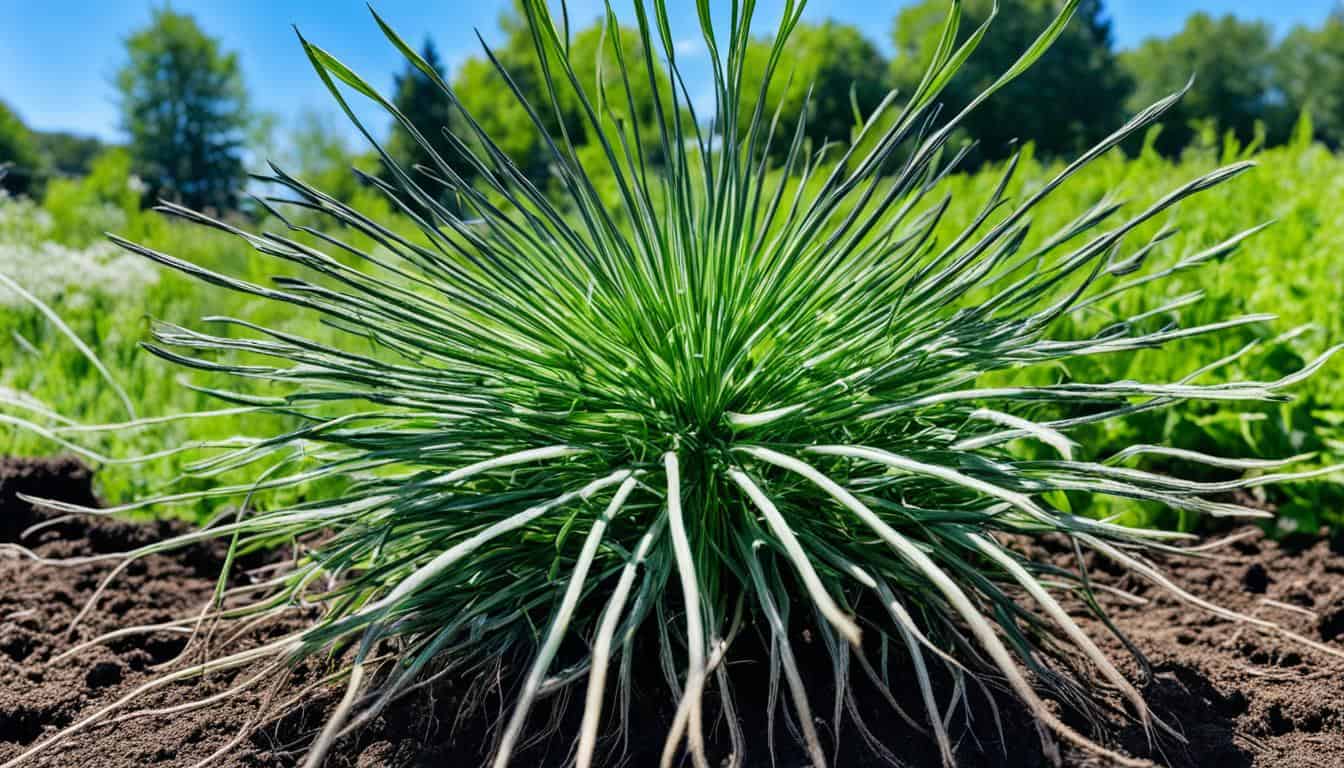
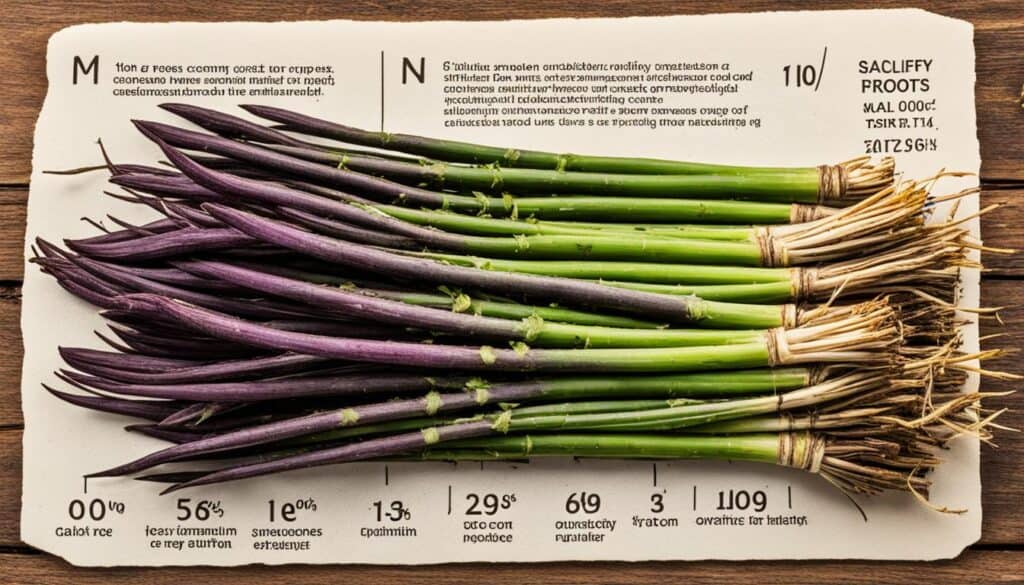
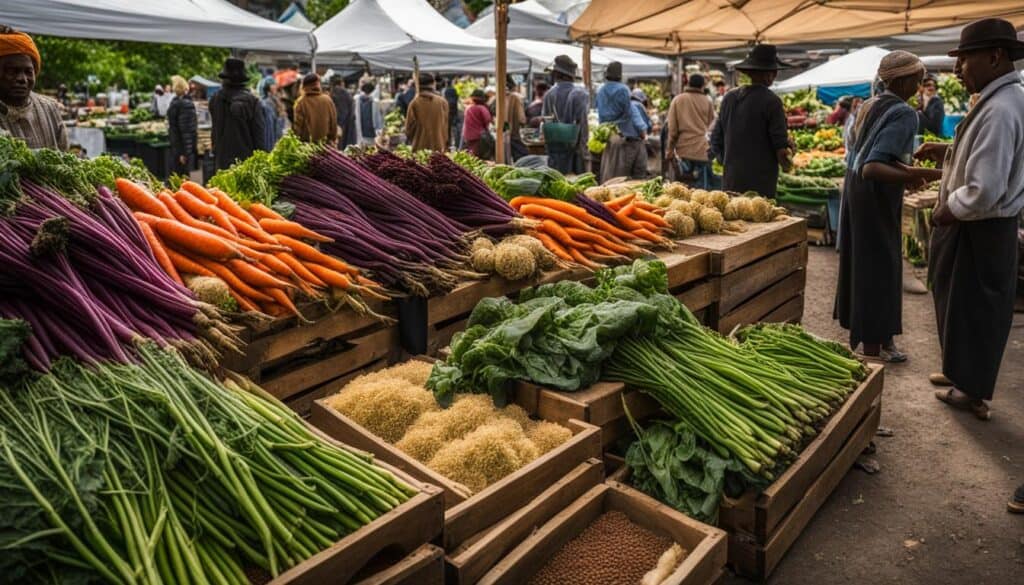
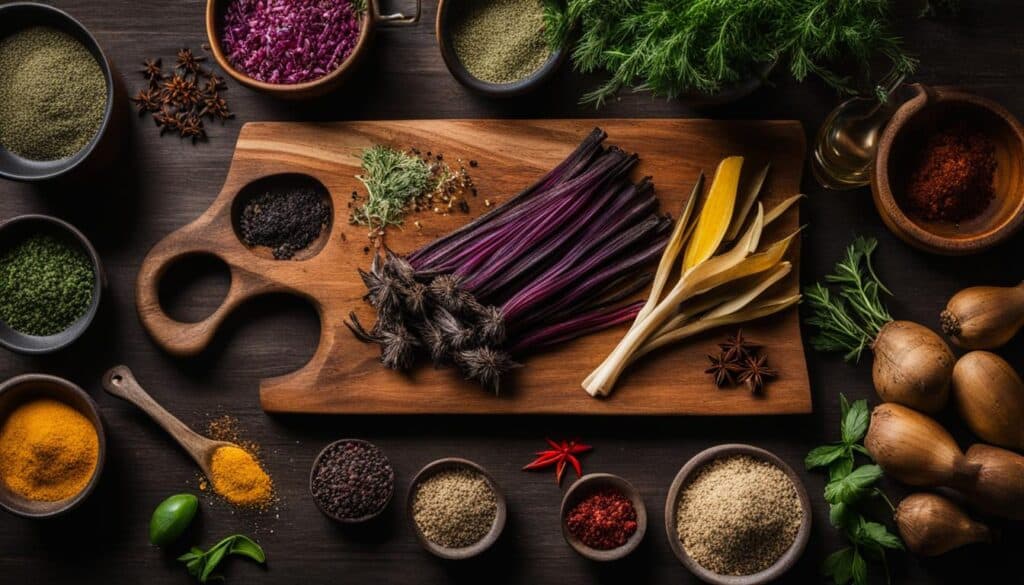
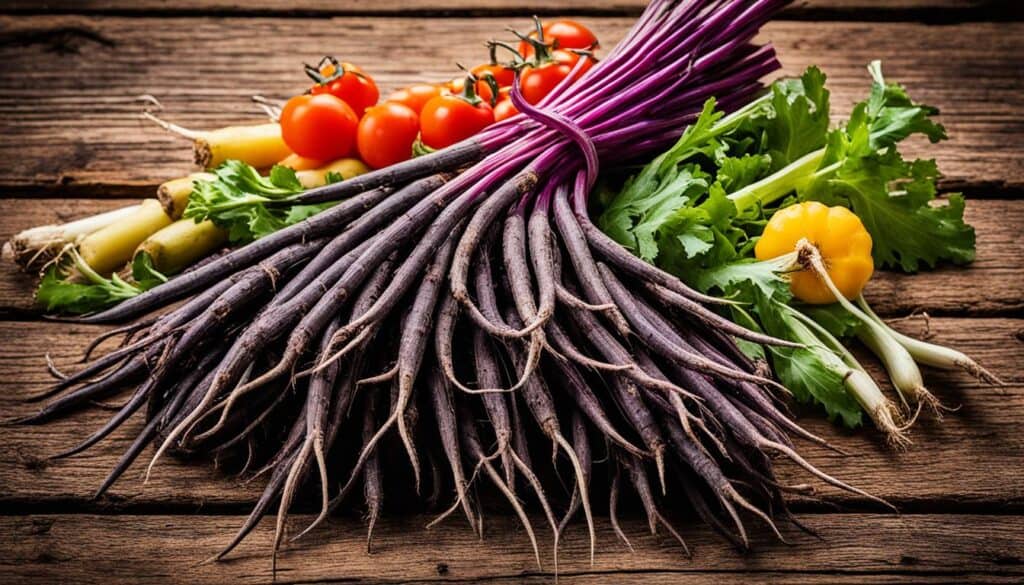


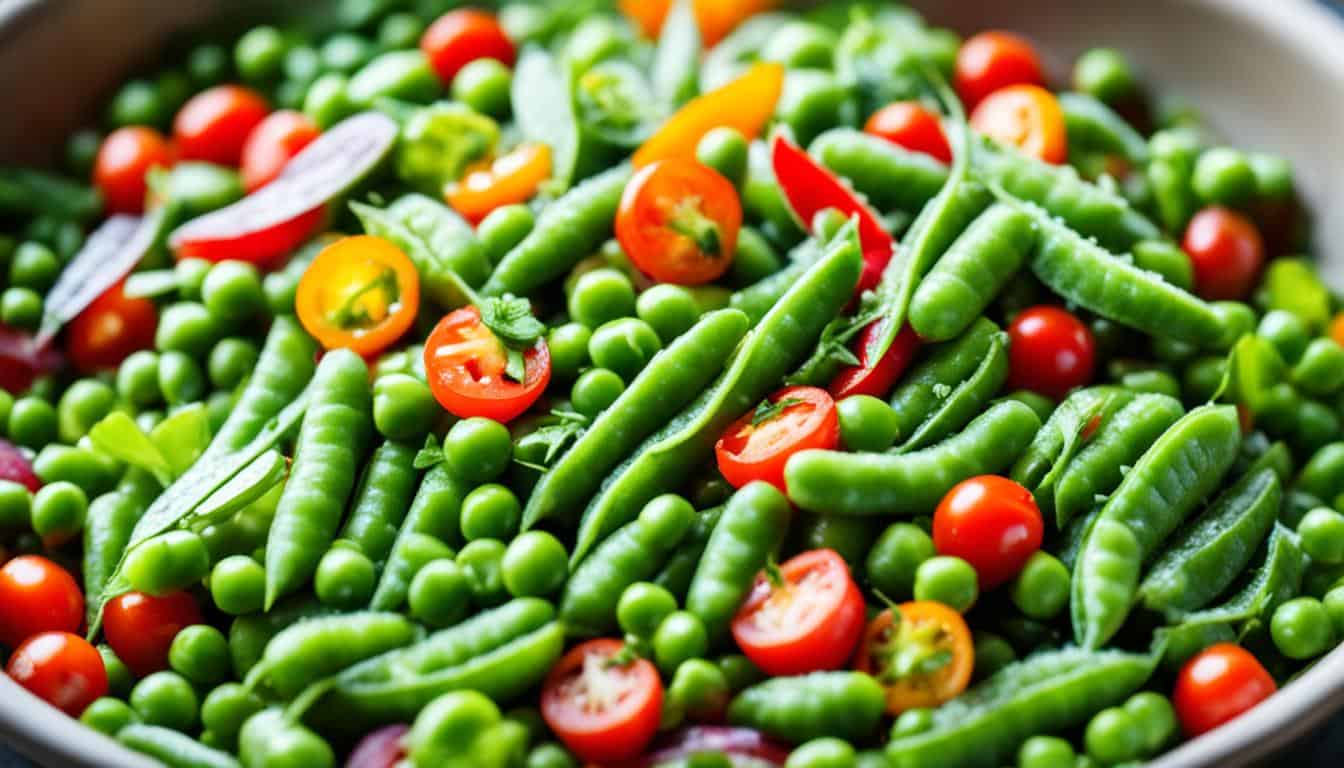
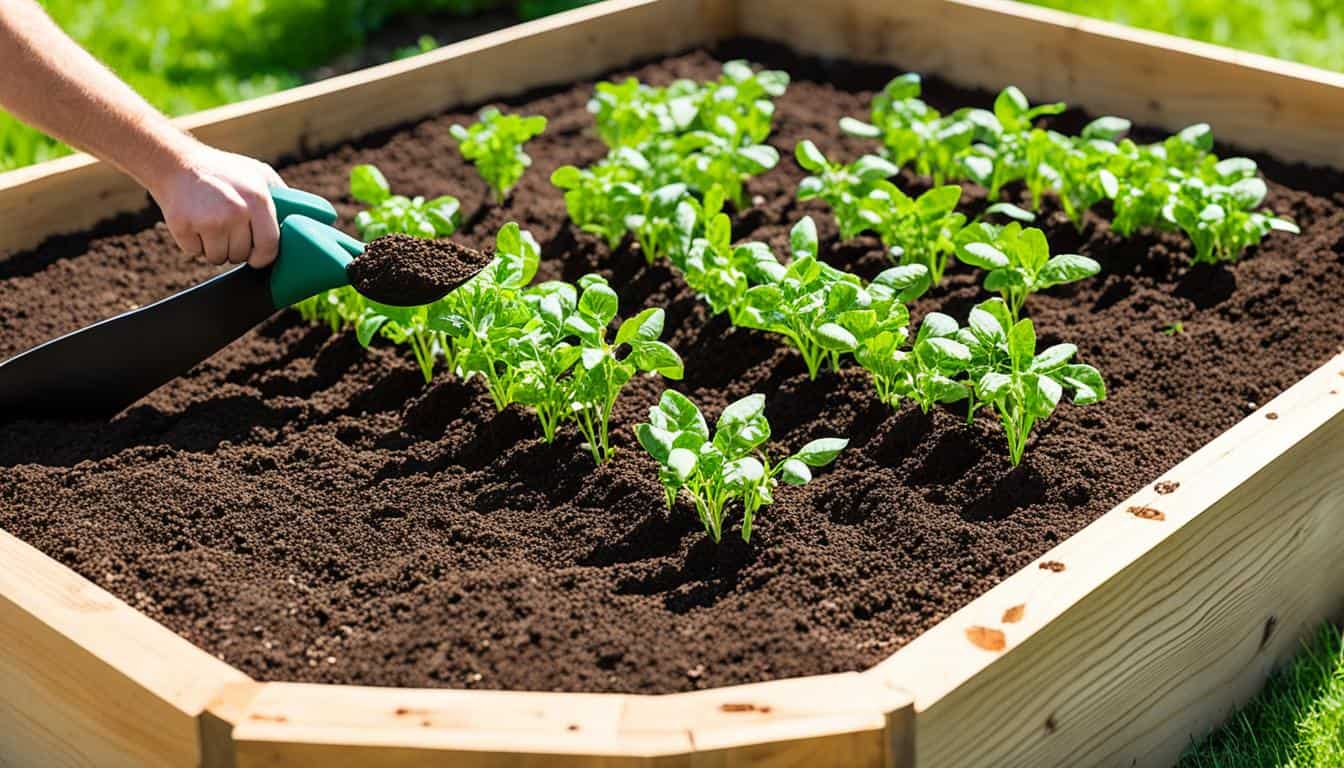
Leave a Reply